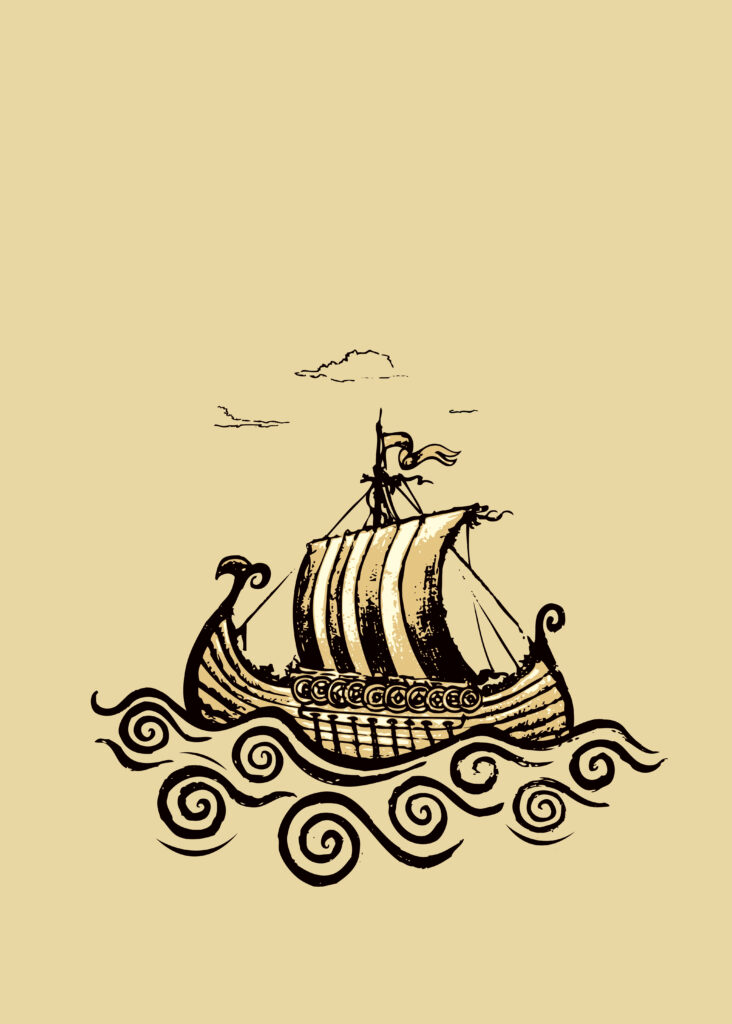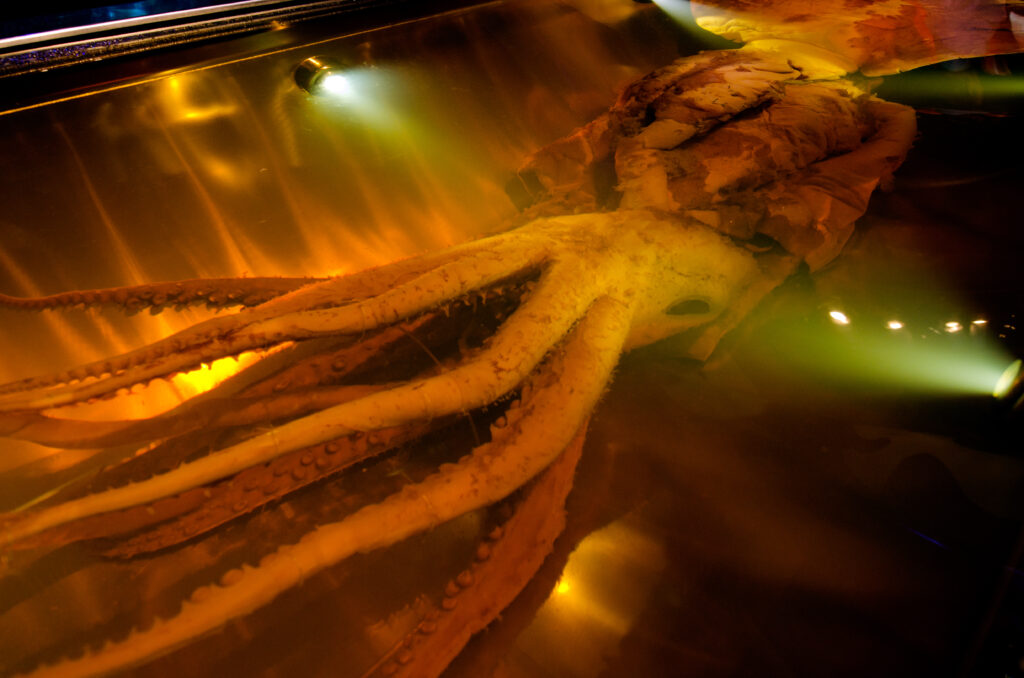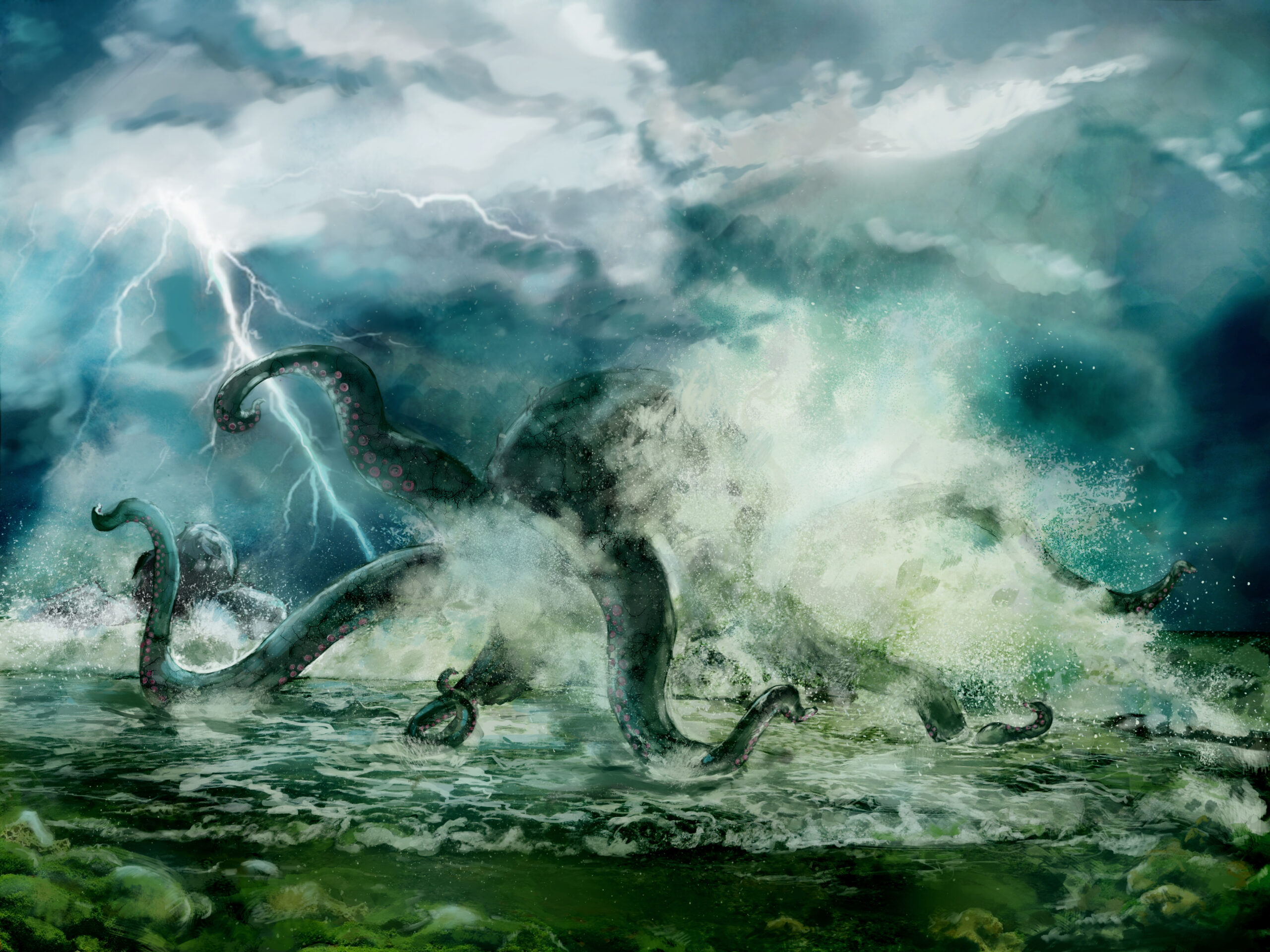The Kraken is a creature of Scandinavian folklore and is often depicted as a giant octopus or squid.
However, it has also been described as a giant crab or lobster, and is said to dwell in the depths of the ocean, preying on ships and sailors.
In this post, we will delve into the history and origins of the Kraken, as well as its depiction in literature and media.
We will also explore the scientific explanations that have been proposed for the Kraken, and discuss the enduring appeal of this fearsome creature.
History and origins of the Kraken
“As the kraken approached the ship, I could feel the deck shaking beneath my feet. It was as if the very earth was trembling in fear of this creature. The kraken began to wrap its tentacles around the ship, pulling it down into the water. I could feel the ship tilting and lurching as it was dragged deeper and deeper into the ocean.
The kraken’s tentacles were incredibly strong, and I could see the wooden planks of the ship splintering and cracking under the pressure. The ship was being pulled apart piece by piece, and there was nothing we could do to stop it.
I could hear the screams of my fellow sailors as the kraken dragged us down into the depths of the ocean. I knew that we were doomed and that this would be my final voyage. The last thing I remember is the cold, dark water rushing up to meet me as the ship was pulled beneath the waves. The power and destructive capabilities of the kraken are truly terrifying, and it is a creature that I hope to never encounter at sea again.
Welcome to our exploration of the Kraken, a legendary sea monster that has captivated people for centuries with its massive size and destructive power.”

The history and origins of the Kraken can be traced back to Norse folklore, where it is first mentioned in the “Orkneyinga Saga,” a collection of legends from the Orkney Islands in Scotland.
In this text, the Kraken is described as a giant sea monster with tentacles that could reach up to the size of tree trunks.
It is said to dwell in the depths of the ocean and was feared by sailors who believed it could capsize and sink ships with its powerful tentacles.
Over time, the legend of the Kraken has evolved and the creature has been depicted in various forms.
It is often depicted as a giant octopus or squid, but it has also been described as a giant crab or lobster.
These depictions may be influenced by sightings of actual giant sea creatures such as giant squids, which can grow up to 43 feet in length.
Depictions of the Kraken in literature and media
The Kraken has appeared in various works of literature and media over the years and has been depicted in a number of different ways.
Some of the most well-known depictions of the Kraken in literature and media include:
- “The Rime of the Ancient Mariner” by Samuel Taylor Coleridge: In this famous poem, the Kraken is described as a giant sea monster with tentacles that could reach up to the size of tree trunks. It is said to dwell in the depths of the ocean and is feared by sailors who believe it can capsize and sink ships with its powerful tentacles.
- “Twenty Thousand Leagues Under the Sea” by Jules Verne: In this classic science fiction novel, the Kraken appears as a giant sea monster that attacks a submarine. It is described as a giant octopus with tentacles that are hundreds of feet long.
- “Pirates of the Caribbean: Dead Man’s Chest“: In this popular film, the Kraken appears as a giant sea monster with tentacles that can reach out of the water and grab onto ships. It is portrayed as a fearsome and destructive creature that is feared by all who encounter it.
These depictions often portray the Kraken as a fearsome and formidable creature and often highlight its massive size and destructive power.
Scientific explanations for the Kraken

While the legend of the Kraken is rooted in Norse folklore, some scientists have proposed that the creature may be based on sightings of real-life giant sea creatures.
One of the most commonly cited explanations is that the Kraken may be based on sightings of giant squids, which can grow up to 43 feet in length.
These creatures are rarely seen and are poorly understood, which may have contributed to the mysterious and fearsome reputation of the kraken.
However, the legend of the Kraken likely evolved over time, with elements of actual sea creatures being incorporated into the descriptions.
For example, the tentacles of the Kraken may be based on sightings of giant squids, while its massive size and destructive power may be exaggerated or entirely fictional.
The enduring appeal of the Kraken

Despite the lack of agreed-upon scientific evidence for the existence of the Kraken, the legend of this sea monster endures and continues to capture the imagination of people around the world.
This may be due in part to the fact that the Kraken represents the unknown and the mysterious.
The Kraken is a creature that dwells in the depths of the ocean, a realm that is largely unexplored and poorly understood.
It is reported that less than 10% of the oceans have been explored.
It is a symbol of the mysteries and wonders that may be hidden in the ocean and serves as a reminder of the power and majesty of the natural world.
The Kraken also represents the fear of the unknown. It is a powerful and destructive creature, capable of sinking ships and preying on sailors.
This fear of the unknown and the potential danger it poses can be thrilling and exciting, which may contribute to the enduring appeal of the Kraken.
Overall, the legend of the kraken endures because it represents the unknown and the mysterious, and serves as a reminder of the power and wonder of the natural world.
Conclusion
In conclusion, the Kraken is a legendary sea monster that has captivated people for centuries with its massive size and destructive power.
Over the years, the legend of the Kraken has evolved and the creature has been depicted in various works of literature and media.
It is often portrayed as a fearsome and formidable creature and is often used as a symbol of the unknown and the mysterious.
Some scientists have suggested that the legend of the Kraken may be based on sightings of real-life sea creatures such as giant squids, and others wholeheartedly disagree with this.
Despite this, the legend of the Kraken endures and continues to capture the imagination of people around the world.

